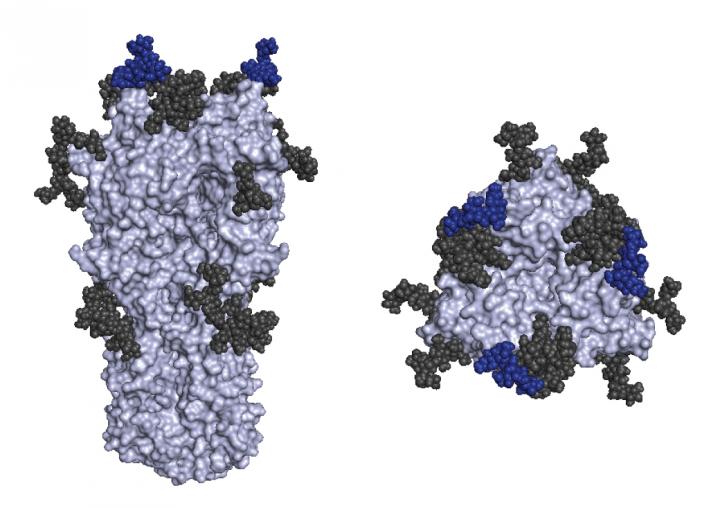H3N2 mutation responsible for reducing vaccine efficacy
Click Here to Manage Email Alerts

Researchers have linked reduced vaccine efficacy during the 2016-2017 influenza season with a mutation in egg-based A(H3N2) vaccine strains, according to a recent study.
Because the same H3N2 strain is being used in this season’s vaccine composition, researchers warned that patients who receive egg-based vaccines may have limited protection against the virus.
“Our experiments suggest that influenza virus antigens grown in systems other than eggs are more likely to elicit protective antibody responses against H3N2 viruses that are currently circulating,” Scott Hensley, PhD, associate professor of microbiology in the Perelman School of Medicine at the University of Pennsylvania, said in a press release. “The 2017 vaccine that people are getting now has the same H3N2 strain as the 2016 vaccine, so this could be another difficult year if this season is dominated by H3N2 viruses again.”
Flublok more effective than egg-based vaccines
Most influenza vaccine antigens are prepared in chicken eggs; however, these vaccine strains often develop adaptive mutations, usually in the hemagglutinin protein, according to Hensley and colleagues.
“Current H3N2 viruses do not grow well in chicken eggs, and it is impossible to grow these viruses in eggs without adaptive mutations,” Hensley said in the release.
The 2016-2017 influenza vaccine composition included a new version of H3N2 with a different outer layer protein that emerged during the 2014-2015 season and continues to circulate in the U.S., according to the release. Although vaccine strains appeared to match most circulating viral strains, vaccine efficacy (VE) was estimated to be only 43% against H3N2 infections, the researchers reported.
To investigate the reasons behind the lower VE, Hensley and colleagues tested sera isolated from study participants aged 18 to 49 years before and after vaccination with egg-based vaccines Fluzone (n = 22) and Flucelvax (n = 26), and a nonegg-based vaccine, Flublok (n = 22), during the 2016-2017 season. They found that antibody titers against H3N2 increased about fourfold after vaccination with Flublok, but only minimal increases in antibody reactivity were observed in participants who received Fluzone or Flucelvax. These differences in antibody responses remained significant after the results were adjusted for age, prevaccination titer and vaccination history. Further investigation revealed that the egg-grown version of the vaccine strain had acquired a new mutation, which limited the efficacy of the vaccine.
“Our data suggest that we should invest in new technologies that allow us to ramp up production of influenza vaccines that are not reliant on eggs,” Hensely said in the release. “In the meantime, everyone should continue to get their annual flu vaccine. Some protection against H3N2 viruses is better than nothing, and other components of the vaccine, like H1N1 and influenza B, will likely provide excellent protection this year.”
VE estimates low in Australia
Interim VE estimates in Australia appear to support Hensley’s warning that this year’s vaccine may have reduced efficacy against H3N2.
The vaccine in Australia — which has the same composition as the vaccine in the Northern Hemisphere — was estimated to be 33% (95% CI, 17-46) effective this season, which peaked in mid-August, according to Sheena G. Sullivan, PhD, associate professor and senior epidemiologist in the School of Global and Population Health at the University of Melbourne and the WHO Collaborating Centre for Reference and Research on Influenza, and colleagues.
VE was even lower against A(H3) strains (VE = 10%; 95% CI, –16 to 31). However, the vaccine appeared to provide moderate protection against A(H1)pdm09 (VE = 50%; 95% CI, 8-74) and influenza B (VE = 57%; 95% CI, 41-69).
“Should the circulating A(H3) influenza viruses predominate in the 2017-2018 Northern Hemisphere influenza season, our results suggest that the vaccine may confer limited protection,” the researchers wrote. “Health authorities should consider other influenza prevention measures, including antivirals and health promotion messaging, in the event of a severe season and low VE against A(H3).” – by Stephanie Viguers
References:
Sullivan SG, et al. Euro Surveill. 2017;doi:10.2807/1560-7917.ES.2017.22.43.17-00707.
Zost SJ, et al. Proc Natl Acad Sci. 2017;doi:10.1073/pnas.1712377114.
Disclosures: Hensley and Sullivan report no relevant financial disclosures. Please see the studies for all other authors’ relevant financial disclosures.
